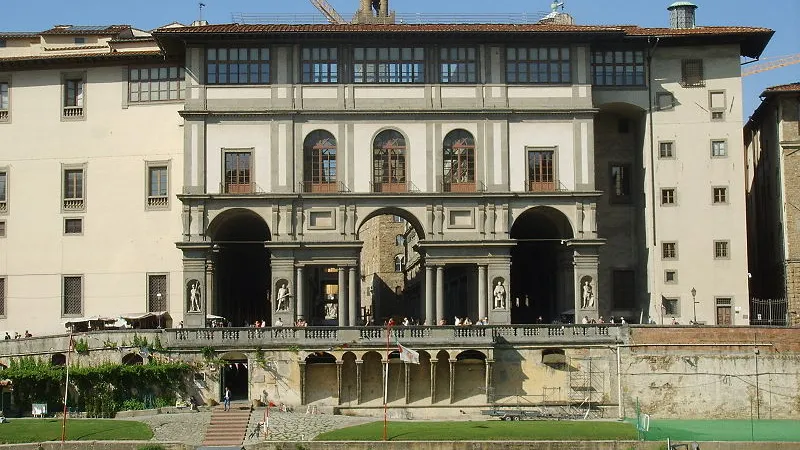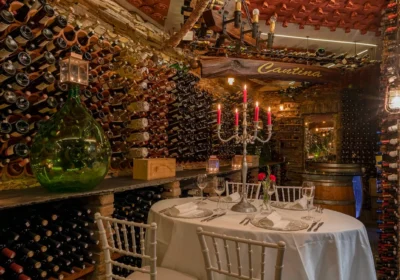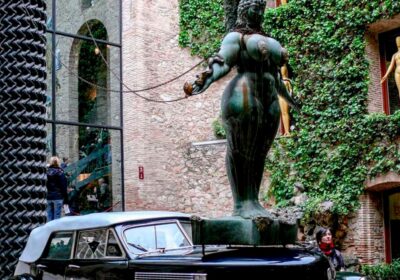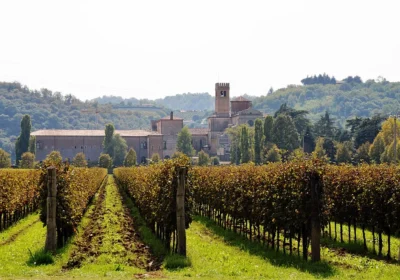The Uffizi Gallery
The Uffizi Gallery is housed in a magnificent building designed by Giorgio Vasari especially for the Medici dynasty. Cosimo I de’ Medici decided to bring together under one roof all the government offices of Florence, with another equally important goal – to immortalise in this grandiose and luxurious palace the greatness and wealth of his famous family.
The construction work began in 1560 and was completed only twenty years later, after Cosimo I’s death. The stone walls of medieval houses were used extensively in the construction of the new palace.
The result was a huge building in the centre of the city on the main Piazza della Signoria, shaped like the Latin letter “U”, with hanging gardens, a magnificent theatre and a unique art gallery.
In addition, the palace ensemble included earlier buildings – the Mint and the Cathedral of St Pietro Skeraggio, dating back to the 13th century. Giorgio Vasari was also fond of the fine arts, so when designing the building he paid great attention to the peculiar long corridors where art canvases could be placed. Especially as the Medici family was very reverent about painting, they were true connoisseurs of the works of artists of past eras and were able to recognise masterpieces in the works of their contemporaries. It is here that rare works by Sandro Botticelli, who, incidentally, was a member of the Medici family, including one of the artist’s most famous paintings, The Birth of Venus, which was only added to the collection in the mid-17th century. In addition, there are works by Raphael, Caravaggio, Rembrandt, Michelangelo, Leonardo da Vinci, a self-portrait by Aivazovsky and many others. The collection of unique sculptures is also impressive, the main of which is the world-famous Venus de’ Medici.
The jewel of the city and Italy, keeps an extraordinary collection of Italian and European paintings of XIII-XVIII centuries. In addition to the Renaissance masterpieces, works by Cimabue, Giotto, Simone Martini, Mazaccio, Piero della Francesca, Giovanni Bellini, Giorgione, Pontormo, Tiziano and other great masters are exhibited here, in chronological order and by school. The Tribuna Buontalenti (1584) displays the most famous ancient sculptures.
Open all days except Monday, 1 January, 1 May and 25 December

















